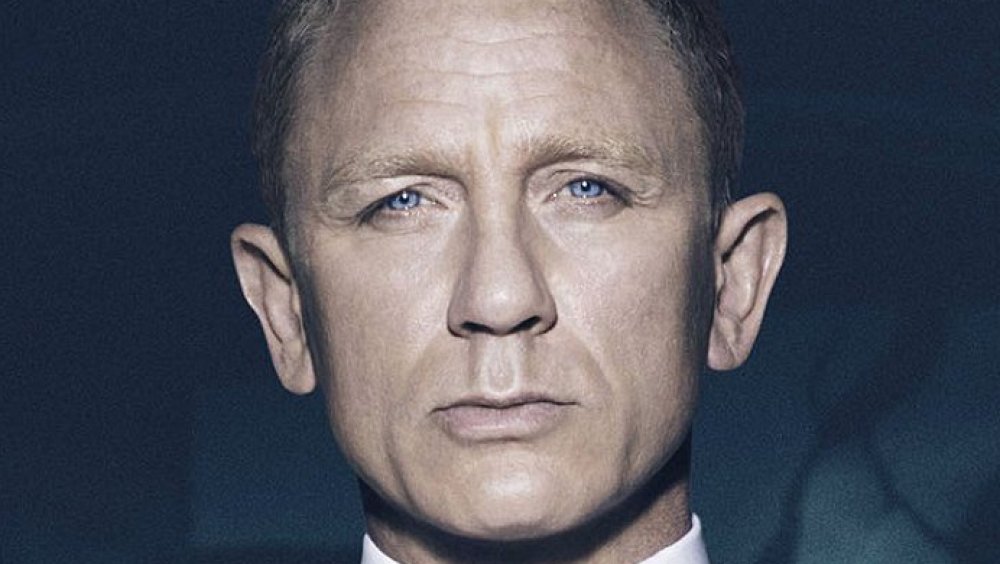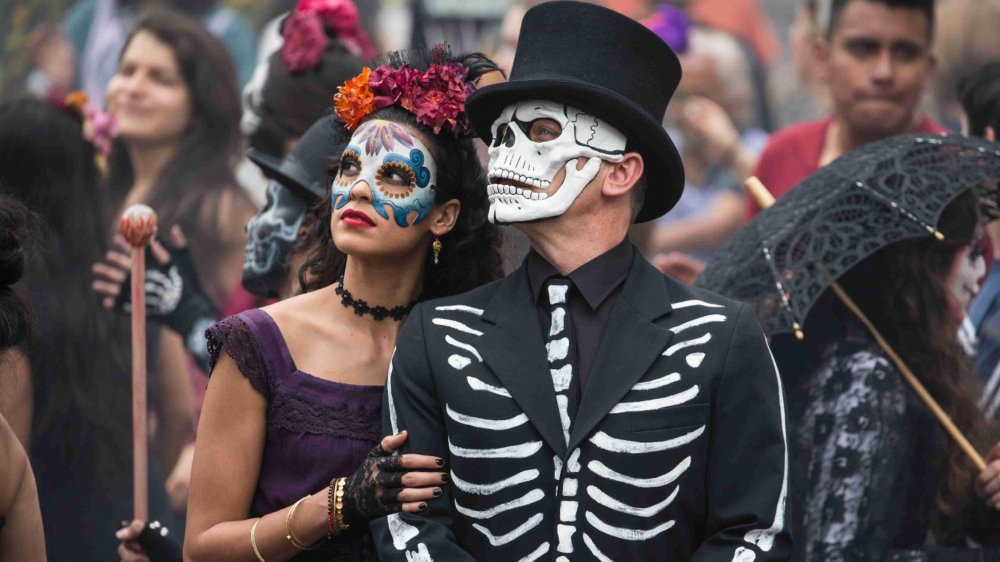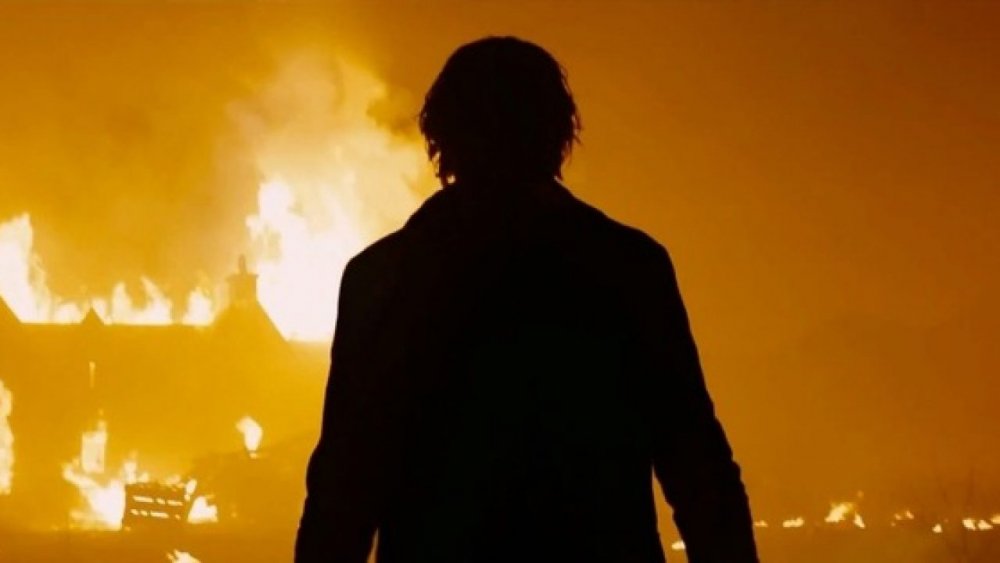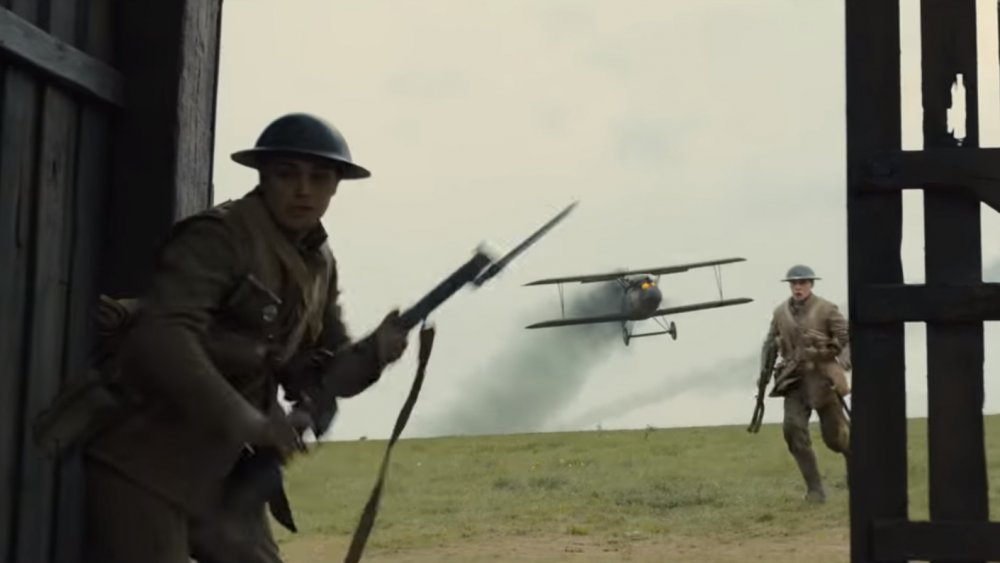How James Bond Inspired 1917 - Exclusive
On the surface, 007 and 1917 don't have much in common. One is about a top-tier superspy who wields impossibly cool gadgets and lives a life of luxury. The other is a mud-soaked World War I drama focusing on the dirty, low-tech adventures of two run-of-the-mill soldiers. They couldn't be more different.
Look a little closer, though, and you'll see some similarities, especially behind the scenes.
Before directing his Golden Globe-winning feature 1917, Sam Mendes helmed Daniel Craig's last two Bond flicks, Skyfall and Spectre. Cinematographer Roger Deakins, whose work brought 1917 to life, collaborated with Mendes on Skyfall. 1917's first assistant director, Michael Lerman, worked on both films.
But the connections between James Bond and 1917 go even deeper than that. While speaking with Looper in a recent interview, Lerman revealed that Mendes and his team's work on 007's exploits inspired and informed 1917 through almost every step of the production. The final products might be poles apart, but without Mendes' spy thriller, his war drama would look very, very different.
The origin of 1917's single shot
1917 isn't the first time that Mendes has played with impression of one single, uninterrupted shot. Spectre, the director's second Bond film, opens with a sequence that tracks 007 as he stalks during Mexico City's Day of the Dead celebration. Similar to 1917, the scene looks continuous — following Daniel Craig as he watches a parade, enters a hotel, climbs onto the roof, and finds the perfect vantage point for his sniper rifle without cutting away. As Lerman told Looper, "doing that sequence on Spectre had to have something to do with where Sam got the idea" to do 1917. "We had a great experience shooting that opening sequence in Spectre. I think it's a very strong point of that film in general."
Like 1917, the Spectre opening is actually stitched together from multiple shots. The five-minute sequence has five shots, Lerman noted, which were filmed over four days. However, thanks to some clever camera work and post-production magic, you won't notice. To the naked eye, it looks like one uninterrupted take.
Mendes, Lerman, and the rest of the 1917 crew were able to repeat many of the techniques they used on Spectre while filming the war drama, including the schedule. "You rehearse four or five hours, then you shoot it for four or five hours until you get it and you go home," said Lerman.
Mendes did the same thing on 1917. Because the production was at the mercy of the weather, the 1917 team needed to have contingency plans in place so that they didn't lose too much time. "We decided very early on that we would need to have the ability to rehearse, not only that day's work, but then the following day's work in case the sun came out," Lerman said. "We usually rehearsed on a shoot day for four to five hours."
Let there be light
Spectre's single-shot sequence might've been James Bond's biggest influence on 1917, but it wasn't the only one. While 1917 doesn't have much artificial lighting — because the camera moves so much, it would've been impossible to hide the equipment — cinematographer Roger Deakins did get one big opportunity to play.
Late in the film, the action moves to the French town of Écoust, which is in flames. The sequence, set at night, is full of big lighting effects, anchored by a massive burning church. "We really had one big source of lighting, which was a huge lighting tower," Lerman explained. "The second half of that sequence is all lit by the burning church."
As it turns out, Deakins was able to draw on his experience with James Bond when it came to designing the sequence. "We did something similar on Skyfall," Lerman said. "At the end of Skyfall, the house is burning down and Roger did similar big lighting effects." Naturally, the two sequences aren't exactly the same, but if you know what to look for you'll definitely see the common ground between George MacKay's harrowing escape from the Germans and the destruction of Bond's family home.
Keeping it real
Surprisingly, 1917 doesn't have too many visual effects. "I wouldn't say there's a lot of CG," Lerman noted. "There's some set extension work for the deep backgrounds.... There's definitely some CG help with some of the blends. And then there's a sequence at the end of the film with one of our actors in the water, which was a huge challenge in terms of how we were going to shoot that. But most of the CG is all background."
For the most part, however, Mendes tried to keep the action as practical as possible. According to Lerman, that's something the director picked up during his time with 007. As Lerman shared, "It goes back to the Bond films, really. On the Bond films you try to do as much practical stunts and effects work as possible. You try to stay away from CG as much as you can."
That technique worked well on Mendes' two spy adventures, so it only made sense to use it when filming 1917, too. "Sam really likes that approach and wants as much as possible to be real," said Lerman. "You do everything you can with practical effects. We did that in this film as well."
Of course, Lerman won't say how some of 1917's more audacious scenes, like its plane crash, were pulled off using practical effects. He'd rather people focus on the story while watching, not how the film was made. "You really just want them to be immersed in these characters," he said. "That's the ideal."



